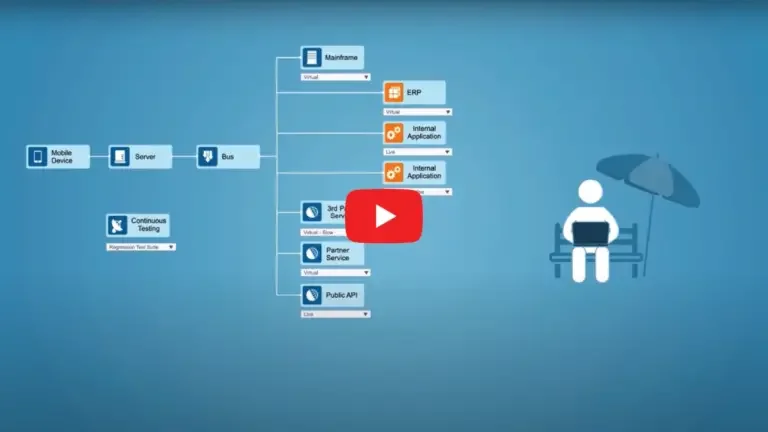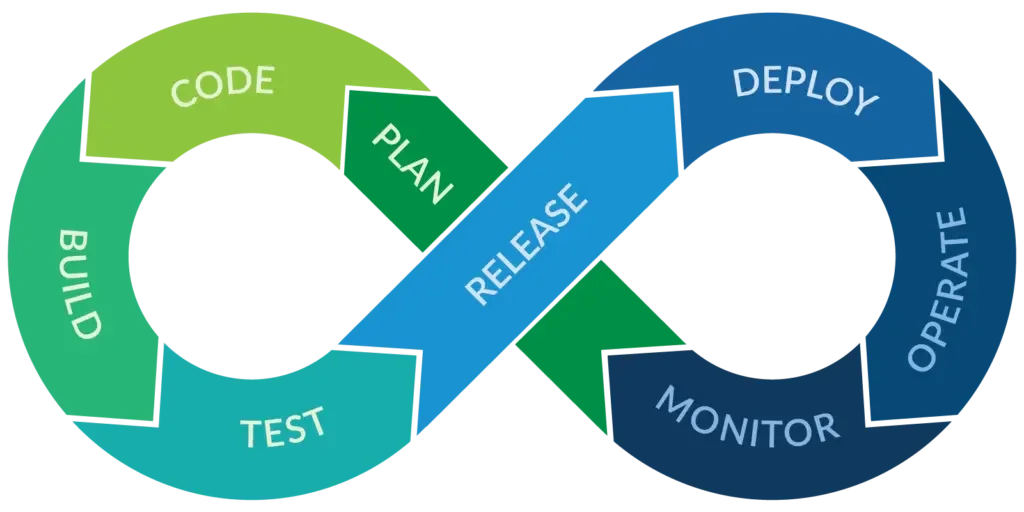See what API testing solution came out on top in the GigaOm Radar Report. Get your free analyst report >>


See what API testing solution came out on top in the GigaOm Radar Report. Get your free analyst report >>

Enterprises need to optimize testing to deliver high-quality applications at speed. Integrate continuous testing tools into your CI/CD pipeline to increase software quality and coverage.
Continuous Testing
The continuous testing process implements automated testing and automation tools as components of the software development pipeline. It provides immediate feedback on any business risks that might exist during development and in eventually releasing the software.
Continuous testing originated as a methodology to reduce wait time on feedback about potential regressions and vulnerabilities. It continues to evolve as developers face the challenges of creating more sophisticated programs in shorter delivery cycles. Selenium is an open source web application testing tool that employs aspects of continuous testing.
At the onset, continuous testing introduced environment-triggered tests and also used traditional developer-triggered tests. It ranges from validating end user experience and stories and the bottom-up needs of development to assessing whole system requirements in light of principal business objectives.
The DevOps team creates and organizes test scripts using testing tools for automatic execution. Developers and testers can analyze data from the test results to make sure the application operates as expected.
When these automated testing practices are integrated into the CI/CD workflow and executed throughout the software development life cycle (SDLC), continuous testing can be achieved.
Check out our blog post to walk through what you need to enable a scalable and reliable test automation strategy for your DevOps pipeline.
Continuous testing in DevOps enables continuous validation of applications as part of the software delivery pipeline so they can be rapidly deployed to market with confidence.
Parasoft’s platform for continuous testing gives you the confidence you need to develop and deliver your critical applications by providing continuous feedback about the real-time health of your projects.
Get full control of your continuous testing ecosystem.
Instead of building a physical continuous testing ecosystem through scripts, Parasoft provides an easy way to diagram exactly how your test environment should be constructed during each continuous test execution, combining both physical and virtual system dependencies to give you complete control of the test environment.
This easy-to-understand interface helps organizations put all the right pieces in place for their orchestrated test environment — test cases, test data, virtual services, and more — to achieve reliable test executions in predictable test environments.
Get critical feedback to accelerate your DevOps pipeline.
Gain insights with a centralized reporting dashboard that contains the analytics and the reporting framework you need to make sense of your test results. Parasoft goes beyond simple test automation and basic dashboards, by providing meaningful ways to understand what to do with the information presented in them.
Parasoft has the only solution on the market that aggregates data from across all disciplines, from static code scanning and unit testing, all the way to functional and nonfunctional testing. All this information is brought together in highly interactive dashboards that seamlessly integrate into your CI/CD pipeline to give you immediate feedback on test coverage and quality.

Achieve efficiency in continuous testing by using AI to pinpoint what needs to be tested.
Parasoft’s test impact analysis technology helps users quickly pinpoint which test cases to execute when code changes occur, as well as understand which areas of the codebase haven’t been tested.
With Smart Test Execution leveraging test impact analysis, you can focus on executing just the right things at the right time, saving time on test runs to make the most out of your continuous testing strategy.
Companies need to contemplate building a scalable, test automation practice that’s based on the testing pyramid that Agile principal Martin Fowler recommends and that Mike Cohn, author of Succeeding with Agile, defined.
The pyramid contains various test elements. It includes:
To accomplish continuous testing, unit testing is a must. API is the essential layer for validating use cases. The top of the pyramid is where you optimize end-to-end UI testing.
Benefits, Phases 1 and 2
Continuous testing allows you to identify and remediate early-stage regressions and potential vulnerabilities, and this is where companies realize the first-phase value of this type of testing.
In the next phase, after you have your functional and unit tests running, and you are utilizing service virtualization for regression tests, you can then focus on nonfunctional requirements: security and performance.

Developers can easily introduce incremental performance problems in an application, often without realizing it. It’s important to recognize and address these issues promptly during development so the application meets the SLA (service level agreement) requirements.
Here’s where you can use continuous testing to shift left performance testing.
This allows you to gain more value from continuous testing and test-driven development.
Benefit from the Parasoft approach. Reduce the cost of developing high-quality software without sacrificing time to market.
Unlike other API testing solutions, which require building a large inventory of tests manually, Parasoft enables users to rapidly build test cases by monitoring application traffic and leveraging AI and machine learning to make those tests meaningful, maintainable, and scalable. Without this, it’s extremely difficult to rapidly build the right amount of test cases within tight deadlines.
Parasoft was built for automation, so even the most complex unit, API, UI, or end-to-end test case can be run with a simplified command line execution or programmatically via an open API call. Using Parasoft’s seamless integration with service virtualization, automated tests can be decoupled from their dependencies and executed continuously, making it easier to integrate test execution into CI platforms and eliminating the need to build scripts to execute test cases dynamically and continuously.
In a production environment, continuous testing involves constant adaption and responsiveness to change, whether in the source code, API, or the test itself. Parasoft provides the only solution that helps users understand when and where the application is changing, and how to update the necessary test cases to have them available as soon as possible for continuous feedback.
Reduce the Time It Takes to Build a Complete Test Suite
Rapid test creation is an essential step for continuous testing because the faster you can build your set of tests, the faster you can get feedback.
Parasoft helps development teams rapidly create tests at every layer of the testing pyramid, from code level unit tests to automated functional API and UI tests. Building a complete, automated test suite provides teams with immediate feedback to identify regressions early in the cycle.
Create More Meaningful Tests
Parasoft helps users optimize their testing strategy by creating a focused library of tests that comprehensively cover the full application with minimal overlap, for a better understanding of real risks.
Make Testing More Maintainable
The shorter iterations introduced by agile development processes demand rapid testing and adapting to the continuous changes in your application, from small elements changing to entirely new resources being added.
Make Testing Stable and Dependable With Virtual Environments
Continuous testing is more than just test automation in which you run your tests automatically, usually nightly. Continuous testing is ongoing, meaning that when you check in code, you can immediately run your test cases.
In order to guarantee that all of your test environments are available and stable at the moment you are ready to execute your tests, organizations can leverage service virtualization testing.
Integrate Continuous Testing Into the DevOps Pipeline
Imperative for any continuous testing initiative is the integration of functional testing into the software delivery pipeline and DevOps toolchain.
Parasoft’s award-winning platform provides an open and interoperable solution for API test creation and execution, so users can connect to many tools in the toolchain and take meaningful actions, from creation to execution to results retrieval.
Get Actionable Insights to Unlock the Value of Continuous Feedback
To take action from continuous feedback, you need answers to the most important questions: How complete is my testing? Where are my quality and security risks? Where do I need to focus? What needs to be done to address the critical risks?
Parasoft provides the analytics you need to process all the information from your various testing activities (static analysis, unit/functional/manual testing, code coverage, and code reviews) so you can receive the most meaningful feedback possible.
By integrating all this data into your Continuous Integration (CI) / Continuous Delivery (CD) pipeline, and other systems of record (such as JIRA), benefit from critical feedback at each stage of the process.
Now that you have a good understanding of continuous testing and how, when, and why it works, it’s time to get started. With Parasoft’s SOAtest API testing tool, you can test IoT web services, REST & SOAP APIs, databases, microservices, and more. Take full control of your test data and environment with Parasoft Virtualize.
By continuously testing your application as it moves down the delivery pipeline, you get instant visibility into any potential risks of failure introduced in the development process.
Continuous testing provides the bridge between development and operations. Parasoft’s Continuous Quality Testing Platform enables teams to maximize their collaboration, identifies defects earlier in the software delivery process, reduces risks, and delivers high-quality software with confidence, thus increasing quality assurance.
Parasoft’s Continuous Quality Testing Platform of automated software testing tools integrates seamlessly into your existing CI/CD pipeline and Agile DevOps workflows to improve your software quality by integrating continuous testing throughout your development process.



Elevate your software testing with Parasoft solutions.